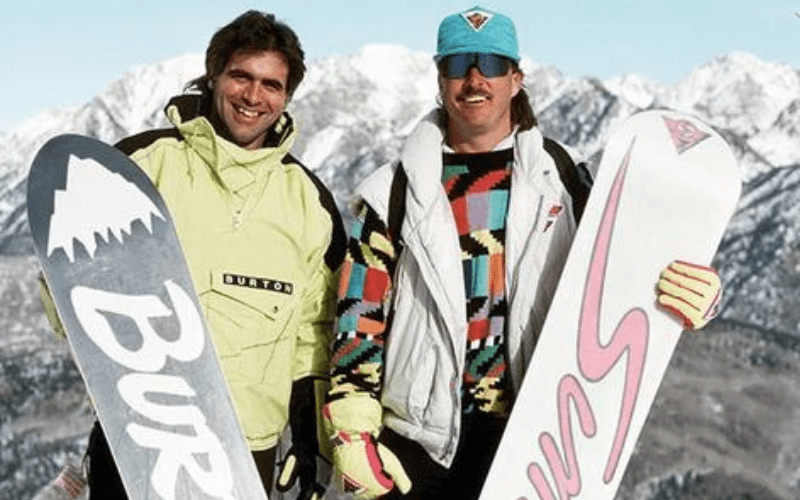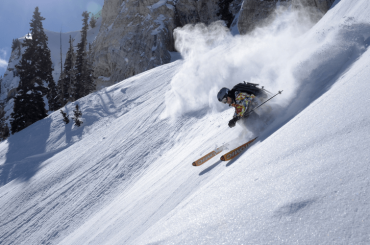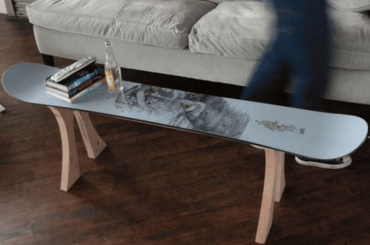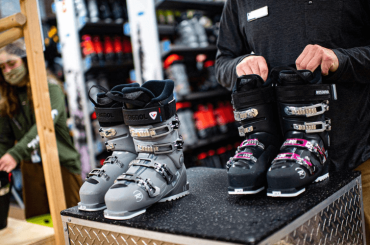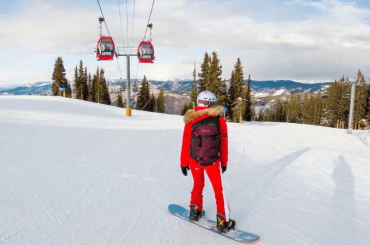Snowboarding has a rich and interesting history that is often overlooked. Snowboarding is a sport that has a relatively short history compared to others. It has come a long way since its inception in the 1960s and is now a popular winter sport enjoyed by people all over the world.
This post will delve into the history of snowboarding, from its humble beginnings to its current status as a major global sporting event. So if you’re interested in finding out more about this fascinating pastime, keep reading!
History of snowboarding
The sport of snowboarding can be traced back to the early 1960s when a man named Sherman Poppen invented the prototype of what we now know as a snowboard. He called it the “Snurfer” (a combination of the words “snow” and “surfer”) and it quickly became a popular toy among kids in the snow-covered states of the US.
In the 1970s, a few enterprising individuals began experimenting with ways to make the Snurfer more than just a toy. They added bindings to the board, which allowed riders to strap their feet in and gain more control over their descent. This new invention was called a “snowboard” and it slowly began gaining popularity among thrill-seekers and winter sports enthusiasts.
The 1980s saw the birth of competitive snowboarding, with the first official competitions being held in Europe and North America. During this decade, the sport began to grow in popularity and soon became an established fixture on the Winter Olympic Games program.
Today, snowboarding is enjoyed by millions of people all over the world and is one of the most popular winter sports. It has come a long way since its humble beginnings and shows no signs of slowing down anytime soon.
Origins of snowboarding – where and when did it start
The origins of snowboarding can be traced back to the early 20th century when people began strapping boards to their feet and sliding down hills. One of the earliest recorded instances of this was in 1916 when a man named Vern Wicklund attached a board to his feet and slid down a hill in Duluth, Minnesota.
However, it was not until the 1930s that the sport began to gain popularity when people started using boards to surf down hills in California.
In the 1940s and 1950s, snowboarding began to spread to other parts of the United States, as well as Europe and Japan. In the 1960s, a handful of professional competitive events were held, but it was not until the 1970s that snowboarding truly began to take off.
Today, snowboarding is one of the most popular winter sports in the world, with people of all ages and backgrounds enjoying it.
Early pioneers of the sport and their contributions
There are a few key individuals who can be credited with helping to develop and popularize the sport of snowboarding. One of the earliest pioneers was Sherman Poppen, who invented the Snurfer in 1966. Another important figure is Jake Burton Carpenter, who founded Burton Snowboards in 1977.
These two men were instrumental in helping to turn snowboarding into the popular global sport it is today. As snowboarding continues to grow in popularity, more and more people are taking up the sport and contributing to its development.
This ensures that snowboarding remains an exciting and ever-evolving sport that can be enjoyed by people all over the world.
Snowboarding in the Olympics – how it has evolved over the years
Snowboarding made its debut appearance at the 1998 Winter Olympics in Nagano, Japan. Since then, it has been included in every Winter Olympics Games program and continues to grow in popularity with both athletes and spectators.
One of the most notable changes to the Olympic snowboarding program was the introduction of Big Air in 2018. This event sees athletes perform jumps and tricks off a large ramp and is considered one of the most exciting disciplines in the sport.
Looking to the future, it is clear that snowboarding has a bright future ahead. With its popularity showing no signs of waning, it is sure to remain an important part of the Winter Olympic Games for many years to come.
The future of snowboarding – what’s next for the sport
The future of snowboarding looks very bright, with the sport continuing to grow in popularity all over the world.
One of the biggest trends in snowboarding at the moment is the rise of freestyle snowboard riding. This involves performing tricks and stunts on specially designed courses and is becoming increasingly popular with both amateur and professional riders.
Another exciting development is the growing popularity of snowboarding in countries that do not typically have a lot of snow. This is opening up the sport to a whole new group of people and is helping to further increase its global appeal.
With so much growth and development taking place, it is clear that snowboarding has a very bright future ahead.
What’s next for the sport?
As snowboarding continues to grow in popularity, there is no doubt that the sport will continue to evolve and change. New disciplines are likely to be introduced and existing ones will continue to be refined.
This means that there is always something new and exciting for both athletes and spectators to enjoy. One certain thing is that snowboarding is here to stay. It has come a long way since its humble beginnings and shows no signs of slowing down anytime soon.
Thanks to the dedication of those who have contributed to its development, it is now enjoyed by millions of people all over the world.
FAQs- History of snowboarding
Who invented snowboarding?
There is no single person who can be credited with inventing snowboarding. Instead, it is a sport that has evolved, with various individuals contributing to its development.
But generally speaking, one of the earliest pioneers of the sport was Sherman Poppen, who invented the Snurfer in 1966. This was a precursor to the modern snowboard and helped to lay the foundations for the sport as we know it today.
Who was the first snowboarder?
The first known person to snowboard was Jack Burton, who rode his Snurfer down a hill in Muskegon, Michigan in the early 1970s.
Burton was a key figure in the early development of snowboarding and went on to find Burton Snowboards in 1977. This company is now one of the biggest and most influential in the sport and has played a major role in its growth and popularity.
What was snowboarding originally called?
Snowboarding was originally called Surfing, after the invention of the Snurfer by Sherman Poppen. However, this name was quickly replaced by snowboarding, as it was more reflective of the actual activity.
How did snowboarding become so popular?
Snowboarding became popular in the 1980s and 1990s, as it was seen as a cool and rebellious alternative to skiing. This appeal continued to grow in the new millennium, as snowboarding became more mainstream and accessible.
Nowadays, snowboarding is enjoyed by people of all ages and abilities, all over the world.
What came first skiing or snowboarding?
Skiing is thought to have originated in Scandinavia thousands of years ago, making it the older of the two sports. Snowboarding began to develop in the 1950s and 1960s, with the first known boards being made from pieces of plywood or laminated wood.
Conclusion:
Invented in the 1960s, snowboarding has transformed from a niche winter sport to a mainstream activity enjoyed by people of all ages.
The history of snowboarding is full of interesting stories and people. From early pioneers like Sherman Poppen to modern-day icons like Travis Rice, the sport of snowboarding has come a long way.
While it may have started as a simple pastime for those looking to explore the mountains in a new way, it has evolved into a respected Olympic sport with athletes from all over the world vying for gold. Thanks for joining us on this journey through the history of snowboarding; we hope you enjoyed it!

